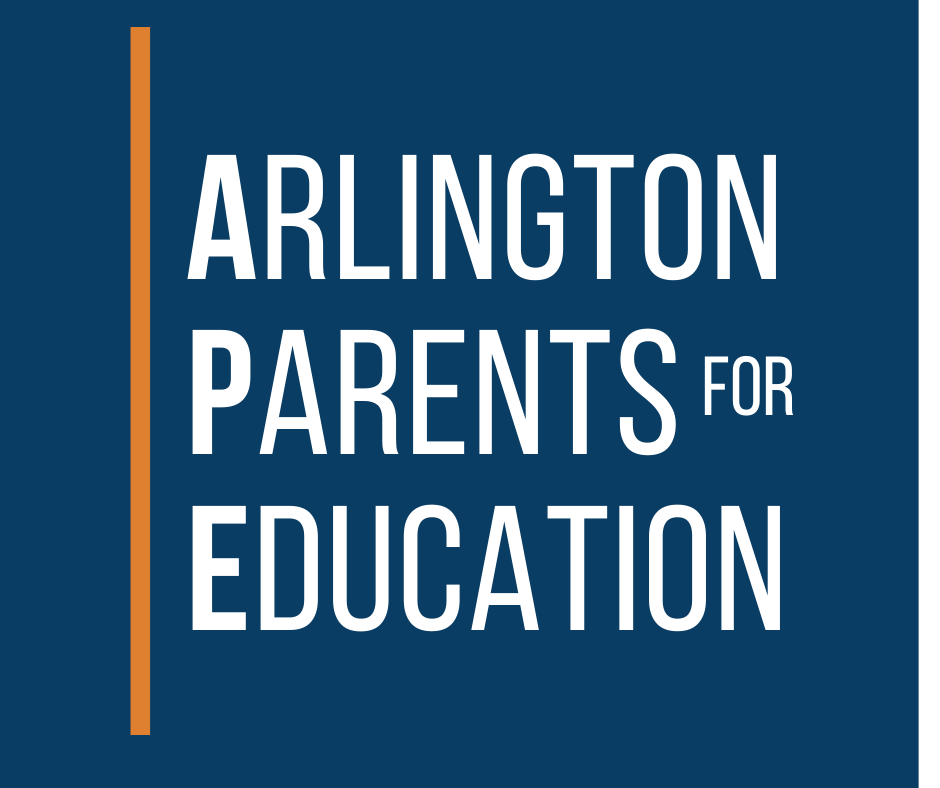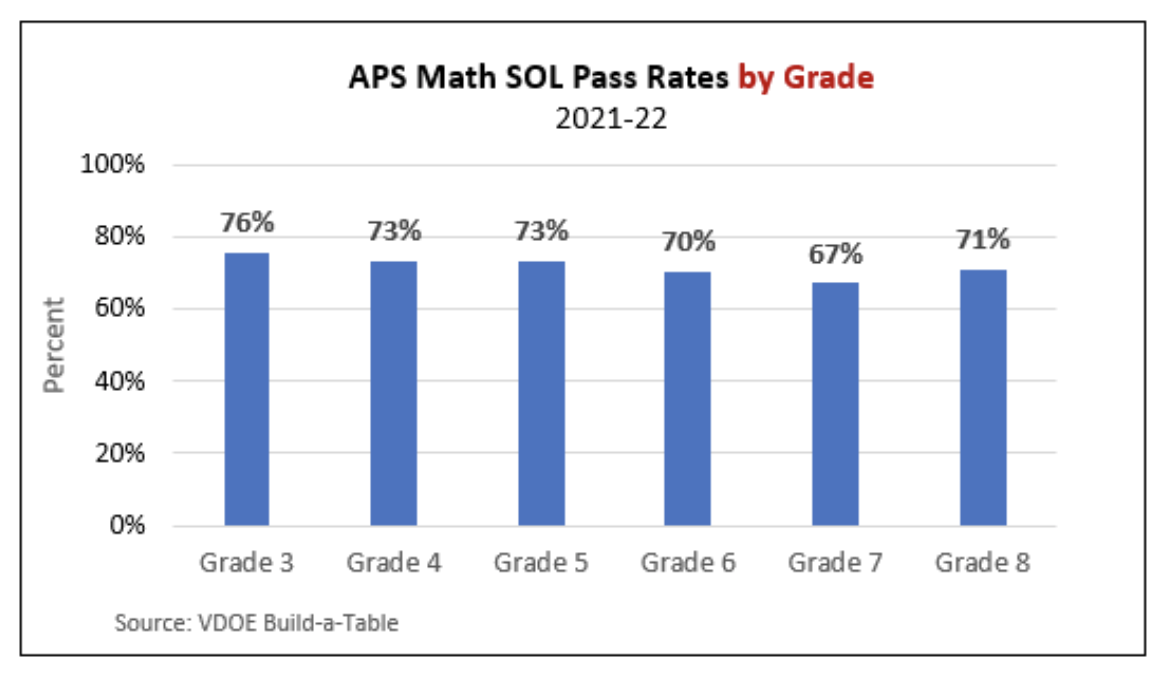Concerns Around “Reimagining” Math 7
In its Math Monitoring Report last October, APS noted that Math 7 needs to be “reimagined” because of its low SOL pass rate and the homogeneity of its students. Low pass rates need to be addressed, but making classes more heterogenous is not the answer. The Virginia Math Pathways Initiative (VMPI) imploded over this latter issue and the literature on heterogenous classes is mixed at best. Furthermore, making Math 7 more heterogenous raises questions as to whether this could impact some APS students’ ability to take calculus in high school. We urge APS to make its deliberations on “reimagining” Math 7 public as this is an issue of keen interest to the APS community. Math 7 lays the groundwork for the high school math progression so any changes there could have downstream effects.
Background
To understand why APS wants to “reimagine” Math 7, it is helpful to take a closer look at the course and its SOL.
Low Math 7 SOL pass rate
APS offers three main math courses for 7th graders – Math 7, Prealgebra, and Algebra I. Math 7 is a grade-level course which leads to Algebra I in 9th grade. Prealgebra and Algebra I are considered advanced courses. Critically, Math 7 students are the only 7th graders to take the Math 7 SOL. No advanced students take the Math 7 SOL which distinguishes it from other APS Math SOLs and depresses its pass rate relative to other SOLs.
There is another, administrative factor which depresses the Math 7 SOL pass rate as well. APS has young middle school students take the Math 8 SOL to qualify for advanced math; none take the Math 7 SOL. This differs from FCPS, LCPS and other Virginia districts where young advanced math students take both Math 7 and Math 8 SOLs. Given the lack of participation by younger advanced math students, APS’s Math 7 SOL pass rate falls well short of the state average. However, the flip side is that APS’s Math 8 SOL pass rate is higher in roughly equal measure than the rest of Virginia since APS concentrates all of its young advanced test-takers there. Thus, part of the low Math 7 SOL pass rate is due to administrative factors unrelated to the course itself.
Given the distortions present in the Math 7 SOL pass rate, it is useful to look for other less distorted measures to gauge math performance. An alternative is to look at the pass rate for all students in a grade (no matter what SOL exam they take). There, a much different picture emerges. While 7th grade has a marginally lower pass rate than other grades, the overall picture is one of generalized weakness throughout Grades 3-8, with a quarter or more of all students having failed their SOL tests in 2021-22. This suggests that math weakness extends beyond just Math 7 and argues for finding a more global solution for shoring up students’ math foundations. One solution would be to adopt US Department of Education’s best practices for teaching struggling elementary students which call for direct instruction, lots of worked examples, and fact fluency practice.
Homogenous Math 7 Class
APS said its second reason for “reimagining” Math 7 is its concern over its homogeneity and the lack of models (role models?) for students. However, Math 7 is not alone in being homogenous; AFDA (Algebra, Functions & Data Analysis), Algebra I Part I & Part II and Algebra I Strategies are homogeneous as well. It is unclear why only Math 7’s homogeneity has been highlighted.
Given their concerns, it appears that APS would prefer to see Math 7 become more heterogenous (i.e. having a greater range of student skills in one class, with the teacher differentiating to meet the needs of each student). This is a very controversial idea; while popular in reform math circles, the research behind heterogenous classes is mixed at best.
San Francisco Unified School District implemented heterogenous classes and problem-based learning in its 2014 math reform, only to see the share of students not meeting standards rise and the achievement gap widen sharply, particularly for Hispanic students.
Stanford Education Professor Jo Boaler reported positive results with heterogenous classes at Railside High School. These were not reflected in state test data, however.
Burris, Heubert & Levin found positive effects from implementing heterogenous classes, however, their scenario involved moving grade-level students up into advanced math classes while also providing additional workshops to assist them with the added challenge. Less wealthy school districts might find it difficult to replicate this approach.
Former Brookings fellow Tom Loveless reviews the literature on heterogenous classes here.
Looking beyond the research, APS 7th grade math does not appear well suited for more heterogenous classes. Only 36% of Math 7 students passed the Math 7 SOL in 2012-22, so it would be difficult to move them up to the more advanced Prealgebra class. However, more than 95% of students in Prealgebra and Algebra I passed their respective SOLs, signifying that they were capable of handling the advanced material. Advanced students would be ill-served in Math 7, particularly since this would mean they would no longer be able to take calculus in high school absent work-arounds. Multiple 7th grade course offerings benefit all students, allowing teachers to more efficiently target instruction and thus optimize learning and challenge.
Summary
While APS has highlighted Math 7’s low pass rate and homogeneity, these factors may not be as significant as they might otherwise seem. We urge APS to look beyond Math 7 to the consistent weaknesses seen across Grades 3-8 in last year’s Math SOLs. Utilizing DOE’s best practices for remediating struggling students and hiring more interventionists could be an effective way of correcting these weaknesses and enhancing student learning. We encourage APS to discuss its plans for Math 7 with the community as we all want to work together to make improvements in APS and get better student outcomes.




